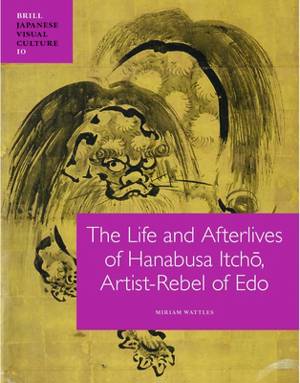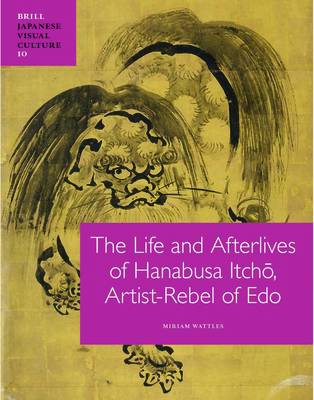
- Afhalen na 1 uur in een winkel met voorraad
- Gratis thuislevering in België vanaf € 30
- Ruim aanbod met 7 miljoen producten
- Afhalen na 1 uur in een winkel met voorraad
- Gratis thuislevering in België vanaf € 30
- Ruim aanbod met 7 miljoen producten
Zoeken
Omschrijving
Miriam Wattles recounts the making of Hanabusa Itchō (1652-1724), painter, haikai-poet, singer-songwriter, and artist subversive, in The Life and Afterlives of Hanabusa Itchō, Artist-Rebel of Edo. Translating literary motifs visually to encapsulate the tensions of his time, many of Itchō's original works became models emulated by ukiyo-e and other artists. A wide array of sources reveals a lifetime of multiple personas and positions that are the source of his multifarious artistic reincarnations. While, on the one hand, his legend as seditious exile appears in the fictional cross-media worlds of theater, novels, and prints, on the other hand, factual accounts of his complicated artistic life reveal an important figure within the first artists' biographies of early modern Japan.
Specificaties
Betrokkenen
- Auteur(s):
- Uitgeverij:
Inhoud
- Aantal bladzijden:
- 300
- Taal:
- Engels
- Reeks:
- Reeksnummer:
- nr. 10
Eigenschappen
- Productcode (EAN):
- 9789004202856
- Verschijningsdatum:
- 18/10/2013
- Uitvoering:
- Hardcover
- Formaat:
- Genaaid
- Afmetingen:
- 196 mm x 254 mm
- Gewicht:
- 1156 g

Alleen bij Standaard Boekhandel
+ 436 punten op je klantenkaart van Standaard Boekhandel
Beoordelingen
We publiceren alleen reviews die voldoen aan de voorwaarden voor reviews. Bekijk onze voorwaarden voor reviews.








